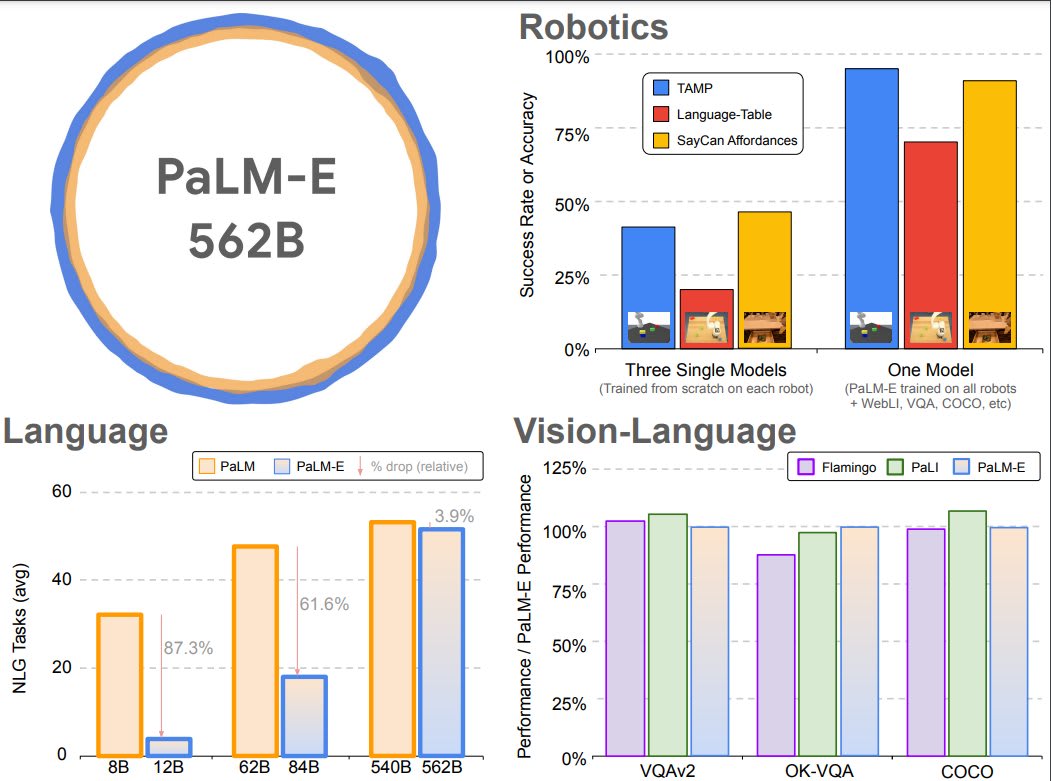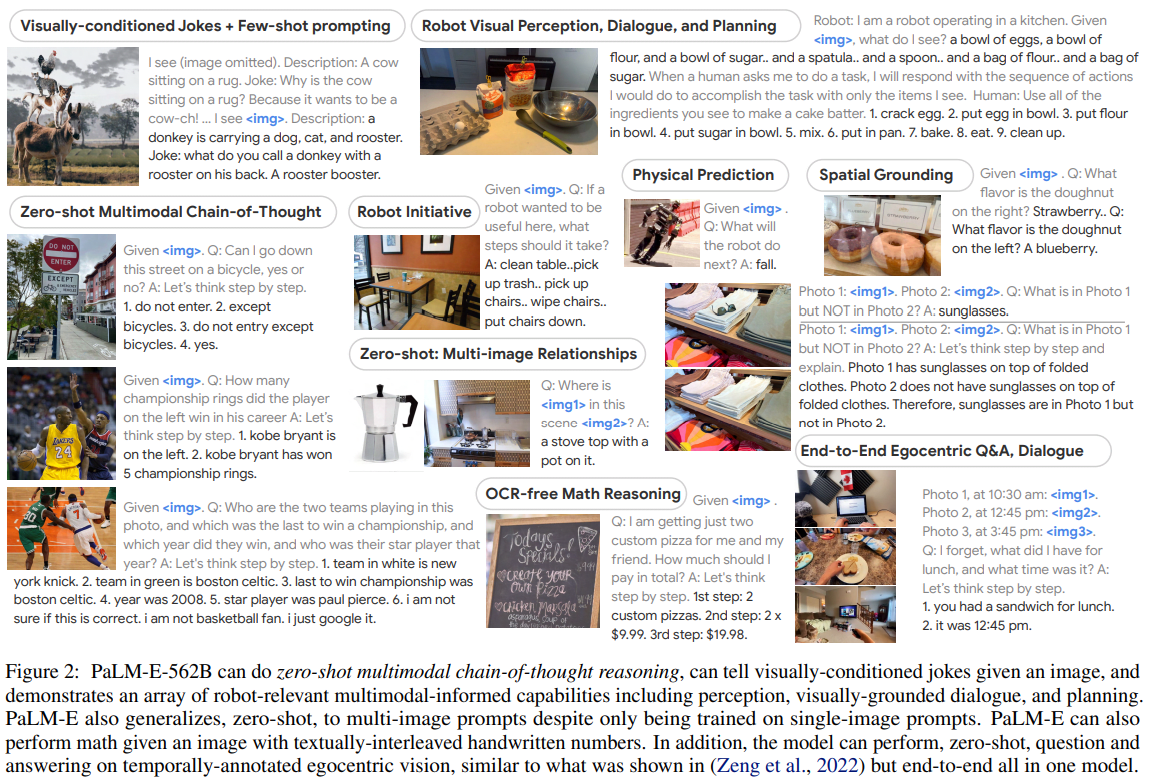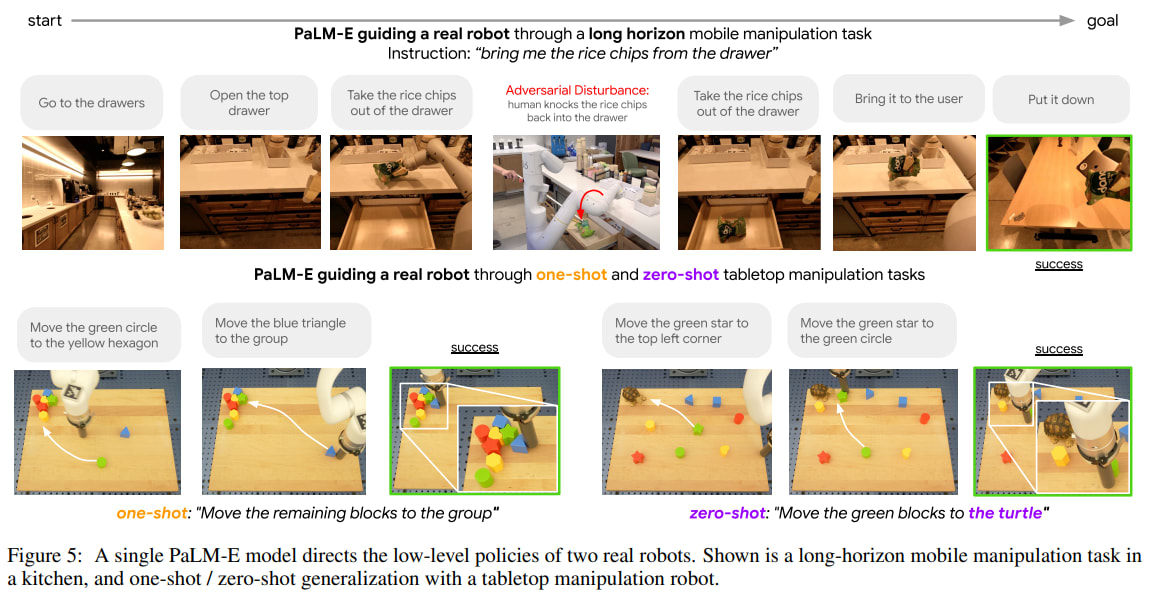Abstract:
Large language models have been demonstrated to perform complex tasks. However, enabling general inference in the real world, e.g. for robotics problems, raises the challenge of grounding. We propose embodied language models to directly incorporate real-world continuous sensor modalities into language models and thereby establish the link between words and percepts. Input to our embodied language model are multi-modal sentences that interleave visual, continuous state estimation, and textual input encodings. We train these encodings end-to-end, in conjunction with a pre-trained large language model, for multiple embodied tasks, including sequential robotic manipulation planning, visual question answering, and captioning. Our evaluations show that PaLM-E, a single large embodied multimodal model, can address a variety of embodied reasoning tasks, from a variety of observation modalities, on multiple embodiments, and further, exhibits positive transfer: the model benefits from diverse joint training across internet-scale language, vision, and visual-language domains. Our largest model, PaLM-E-562B with 562B parameters, in addition to being trained on robotics tasks, is a visual-language generalist with state-of-the-art performance on OK-VQA, and retains generalist language capabilities with increasing scale.



I honestly now believe that AGI already exists. This model may not have been it, and we will debate for hundreds of years* about whether the threshold was transformers or MLPs or multimodal, and which first model was really the first, in the same way we still debate which electronic computer was truly the first. But I do believe that it is here.
We do not have human-level machine intelligence (HLMI) yet. These systems still have a lot of limitations, in particular the context window and lack of memory. They are very limited in some domains such as robotics. However, it seems unlikely to me that we are not already in the takeoff.
* (assuming the debate doesn't get abruptly stopped)
The only reasonable debate at this point seems to me to be exponential vs superexponential.
When somebody tells you to buy into the S&p 500 what's their reasoning? After a century or two of reliable exponential growth the most conservative prediction is for that trend to continue (barring existential catastrophe). We are in our second or third century of dramatic recursive technology improvement. AI is clearly a part of this virtuous cycle, so the safest money looks like it'd be on radical change.
I appreciate the perspectives of the Gary Marcuses of the... (read more)